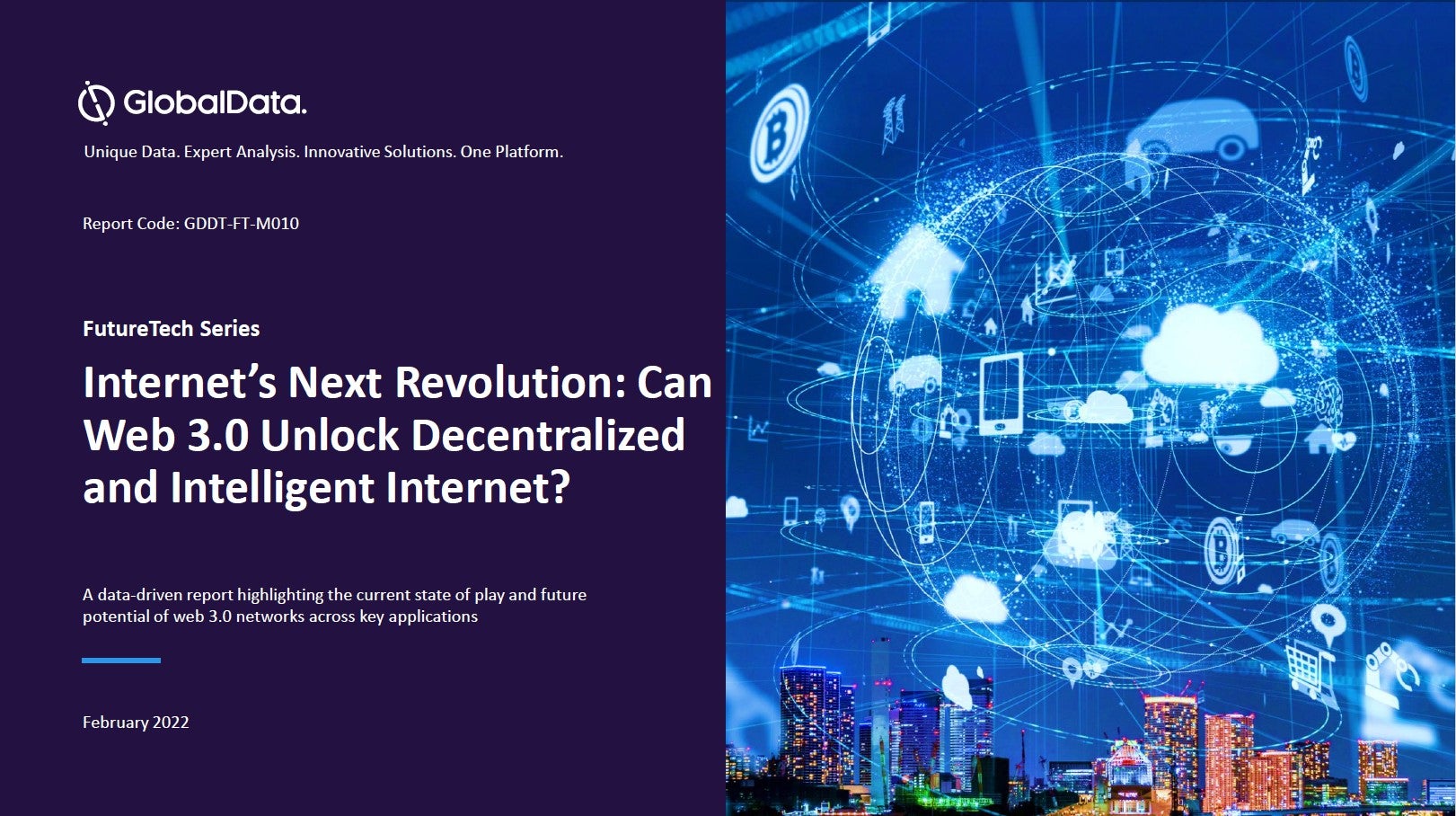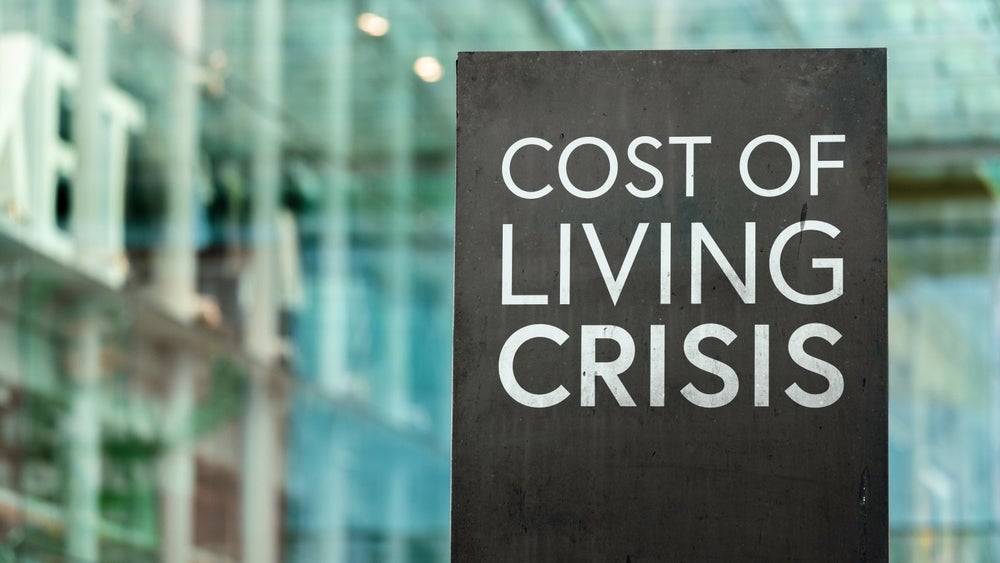How is your bank dealing with the rise of Web 2.0
technologies? Speaking at RBI’s Innovation’s banking
conference in Singapore at the start of last month, Edwin Van
Raalte, senior manager of business development, international
direct banking for Rabobank, gave an emphatic appraisal of
his bank’s use of the new breed of marketing
tools
How well do you really know your competitors?
Access the most comprehensive Company Profiles on the market, powered by GlobalData. Save hours of research. Gain competitive edge.

Thank you!
Your download email will arrive shortly
Not ready to buy yet? Download a free sample
We are confident about the unique quality of our Company Profiles. However, we want you to make the most beneficial decision for your business, so we offer a free sample that you can download by submitting the below form
By GlobalData There are a select number of major banking groups
There are a select number of major banking groups
energetically embracing the new breed of interactive social media
and web tools – commonly referred to as Web 2.0 – and putting clear
daylight between themselves and the rest of the industry: Bank of
America, Wells Fargo, ING, HSBC, JPMorgan Chase, TD Financial,
Royal Bank of Canada and Rabobank. Take Wells Fargo as an example:
it has four blogs, more than any other financial institution, and
Ed Terpening, Wells Fargo’s vice-president of social media, says
that the goal for his group is “to be where our customers are, when
they are there, which increasingly is the blogosphere and online”.
Bank of America, now Wells Fargo’s core competitor in the US and
perhaps the world’s most web savvy bank, has begun publishing
customer reviews and rankings of its products as part of its
substantial Web 2.0 portfolio.
But while some banks are jumping in headfirst,
exploiting a host of new media to engage with their markets, there
remains a high degree of hesitancy by the majority of banks over
the role Web 2.0 will play in their marketing and customer
communication strategies. A global study of 160 financial services
players by IT vendor Infosys in January this year (see RBI
593) found that while RSS feeds and podcasts were widely used
by financial services players, blogs and other
tools allowing User Generated Content such as communities and
customer reviews had a very low adoption rate.
A number of reasons have been put forward for
this, including bank conservatism, an industry highly sensitive to
reputational risk as well as much publicised concerns about the
uncertain return on investment. Certainly Web 2.0 demands
considered understanding of this new generation of marketing tools,
and the risks involved. Blogs, discussion forums, podcasts,
vidcasts, product reviews, customer interviews, branch ratings,
online feedback/complaint sites, online communities, social
networking, virtual worlds, video sharing – Web 2.0 is about
becoming wholly transparent online and being seen to be keen to be
customer friendly and ‘customer connected’.
Speaking at RBI’s Innovation’s
banking conference in Singapore at the start of last month (see
RBI 600), Edwin Van Raalte, senior manager of business
development, international direct banking (IDB) for Rabobank, gave
an emphatic appraisal of his bank’s use of Web 2.0 in its
international direct banking arm, RaboPlus. RaboPlus, operating in
markets such as Ireland, Australia and New Zealand, now boasts a
robust list of Web 2.0 functionality: product reviews, with
customers giving star ratings to Rabo products; a RaboPlus blog;
online competitions such as the recent Investor of the Year;
financial podcasts; and a range of interactive online e-Zines and
e-Calculators.
The Dutch bank, said Van Raalte, is investing
heavily in its online channel both domestically in the Netherlands
and abroad on the back of increasing customer demand; the low cost
nature of online operations and their ability to create further
cost reduction by creating “global economies of sales”; and better
cross selling opportunities. The group is working very successfully
with its strategic partners Callataÿ & Wouters and Schuberg
Philis which means it can launch and run a ‘greenfield’ direct bank
in just six months with a relatively small number of staff. “IDB
focuses on offering a targeted package of simple financial products
in the most reliable and convenient way,” he said. “Rabo’s
international direct banking arm is using low cost operating model
based on full, straight-through processing with a global
centralised ICT backbone… This approach results in economies of
scale and cost leadership compared with our competitors. As a
result of the operational excellence approach, IDB is able to run
the local businesses with a total of 15 staff each.”
All of which makes efficient use of cost
effective web tools even more important. Van Raalte said: “Mass
one-way marketing as a communication strategy is becoming less
effective and more expensive. In the US, conversion rates have
dropped to less than 1.5 percent and only 7 percent of consumers
believe companies tell the truth in ads. It is therefore of
strategic importance for companies to find ways in which they can
establish trust with their communication messages and use reference
groups as a target platform to influence individual customers. This
is based on using the power of ‘word of mouth’ as a key strategy…
So for an online bank there is merit in using social computing
based on Web 2.0 as a strategy.”
He listed 10 advantages, as he saw them, for
banks involved in Web 2.0. It
- Fast-tracks image building – making the bank
look modern, internet savvy and hi-tech; - Offers greater public relations
opportunities; - Increases brand awareness;
- Provides real-time marketing opportunities
(ie, online competitions, viral campaigns, customer polls and
forums); - Differentiates RaboPlus from
competitors; - Creates open communication platform;
- Provides consumers insight;
- Educate customers through customers;
- Has clear cross sell opportunities when
customers recommending each other customers; and - Initiates “worth to mouth” marketing.
But Van Raalte also flagged-up 10 risks and counter points that
banks clearly need to be aware of and prepare for in the brave new
world of Web 2.0:
- There are very important legal issues, and legal complications
are a major reason why banks have been so slow in adopting Web 2.0
tools; - Manageability of forums and blogs (ie, large volume of
postings); - Feedback/posts from unhappy customers;
- Comments about better offers of other banks or new
entrants; - Internal (outdated) IT policies;
- Spam;
- Regulatory issues around improper disclosures;
- Artificial analysis/not defining a long term strategy;
- Unclear positioning; and
- Lack of knowledge.
- But he stressed that: “At the end of the day, if you as a bank
do the right thing for your customers, you should not be worried.
Obviously, there are challenges to focus on, but if you really
engage with people then you can improve your business and customers
appreciate it. Is Web 2.0 just another ‘buzz word’ or a vital
business tool? This depends obviously on the chosen positioning and
the definition used for Web 2.0. But for a virtual bank such as
RaboPlus, Web 2.0 is clearly of strategic importance. Moreover,
most of young customers are using social networking sites – 80
percent aged between 18-21, according to Forrester Research – and
an average of 30 percent of adults. If your customers are using the
web and social networking sites more and more to find answers for
their questions and share their experiences, should your bank not
be out there?”
Rabobank’s half-yearly figures, published in
September (see RBI 598), showed the growing importance
international retail banking is playing to the group’s business.
While the biggest fall in group profit came from Rabobank’s
wholesale and international retail banking division, which suffered
an 88 percent drop year-on-year in net profit, the wholesale
banking took the brunt of the mart downturn. Income from
international retail banking increased 40 percent to reach €396
million, with such operations now accounting for 30 percent of the
group’s total loan portfolio, with lending increasing 18 percent to
€25.6 billion. Its online-only services in Ireland, Belgium,
Australia and New Zealand saw deposits up 29 percent year-on-year
to €6.6 billion.
Van Raalte concluded his presentation in
Singapore by talking about the next generation of online tools, Web
3.0. This, he said, was the so called intelligent web, where
companies use artificial intelligence technologies which emphasise
machine-facilitated understanding of information in order to
provide a more productive and intuitive user experience. “When will
we see Web 3.0 in the banking industry? Most banks are still in the
very early stages of Web 2.0 adoption, so Web 3.0 seems far away…
However, only 15 years ago internet banking was almost non
existent, and today over 50 percent of people use internet banking
in many developed countries. There is a long way to go both from a
technological as well as a consumer perspective, let alone the
conservative nature of many banks…”








